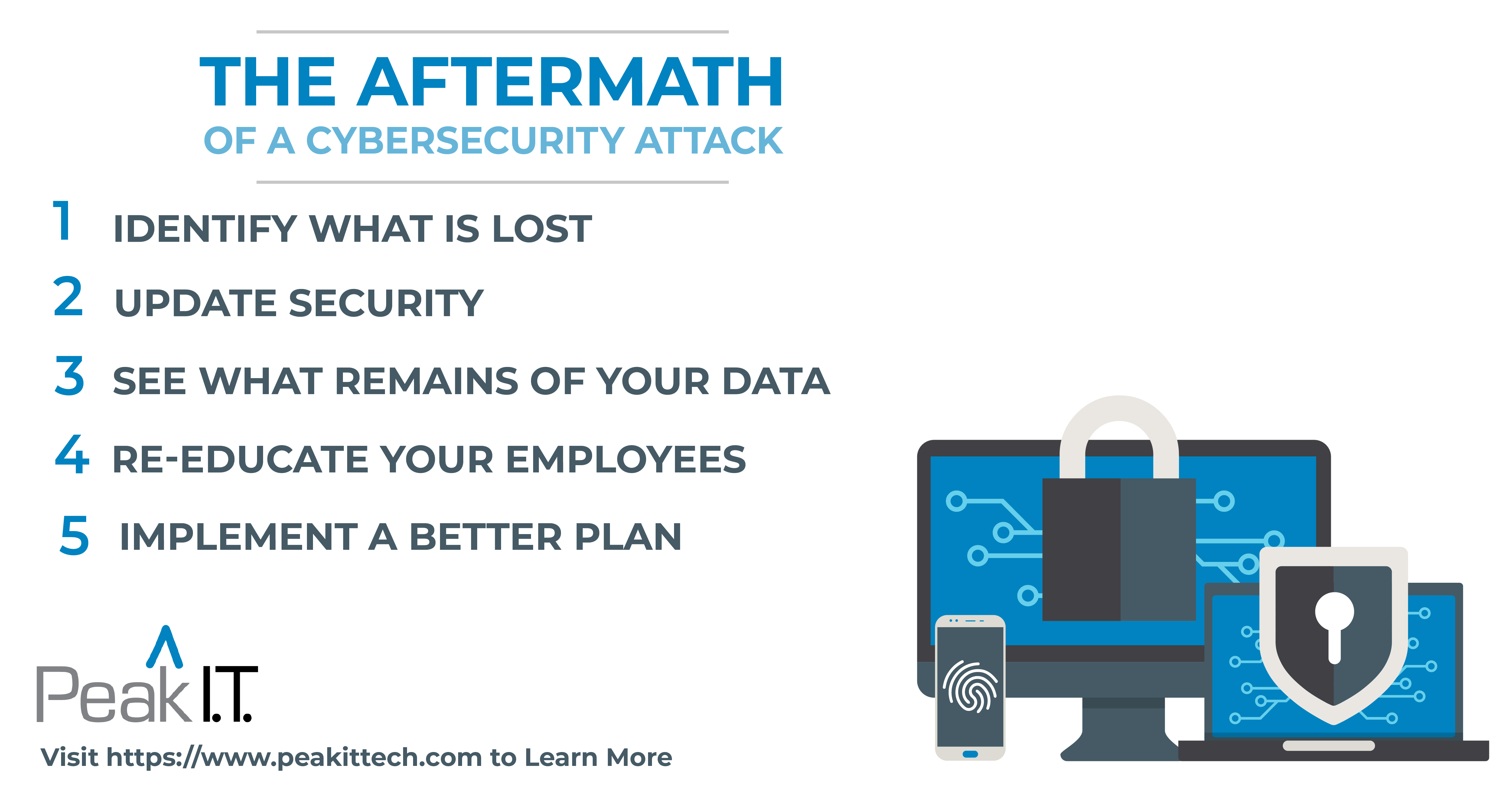No one wants to deal with having to recover from a cybersecurity attack, but, the truth is, you may have to at some point. One thing that makes the recovery process worse is not being prepared. A data breach or can happen, and how you respond to it can make or break your company. Today, we’re taking you step-by-step through how to plan in case your company is hit by a cyber attack.
Identify What is Lost
So, you have experienced a data breach, and your company has lost some vital information. The next step is to find out what someone gained access to and what information they took. This will confirm the seriousness of the attack. If they gained access to entry-level information, you might not be as too worried. If they obtained more sensitive, classified information, then you may have a reason to worry.
The type of information your company handles is also important. If you’re handling sensitive information such as social security numbers, tax information, or anything of that nature, the breach will always be considered serious. This should always be taken into consideration if a breach ever happens to you or your business.
Update Security
Though you think you have proper security measures in place, it’s possible that there are unknown issues or cracks in your security. Your business probably doesn’t need a complete overhaul of its security structure unless you’ve been breached before. You may have to just tweak what is already in place in order to make things secure again. Our advice is to assess the breach and act accordingly depending on what was taken and how the information was obtained by an outsider.
Another key piece is instant response time during an attack. Information won’t stop being taken. You must resecure your accounts to be sure that whoever was taking information, no longer has access to it.
See What Remains of Your Data
Now that the breach has been stopped and you know what they have taken, see what you can salvage or what is left. The best way to do this is to backup your data on a separate device if you aren’t doing that already. If your information is already backed up in a secure location, there’s a chance the hacker wasn’t able to harm this asset. This is a best-case scenario because you will still have access to all of your data. The hard part will be getting back or protecting what was taken already.
Re-educate your employees
After you’ve done everything you can immediately after being attacked, it’s time to address your entire team. Getting everyone to understand just how important protecting your company’s or client’s information is, should be a top priority. This will prepare them for whatever comes next in the unfortunate event that your company does experience some sort of data breach.
Implement a better plan
Lastly, get a better plan. If there was a breach, obviously something didn’t work. Creating a better strategy so that this doesn’t happen again is probably the most important thing to the survival of your business. If a second attack doesn’t cripple your company financially, it can ruin your reputation. People are trusting you with their most valuable assets and it is your job to protect them. If you break that trust more than once, it’s likely clients won’t be too understanding.
All of this can be a lot to take in, but having a plan for the worst-case scenario is better than scrambling to stop a breach in progress. Contact us today to see how we can help in preventing an attack and securing your information.

